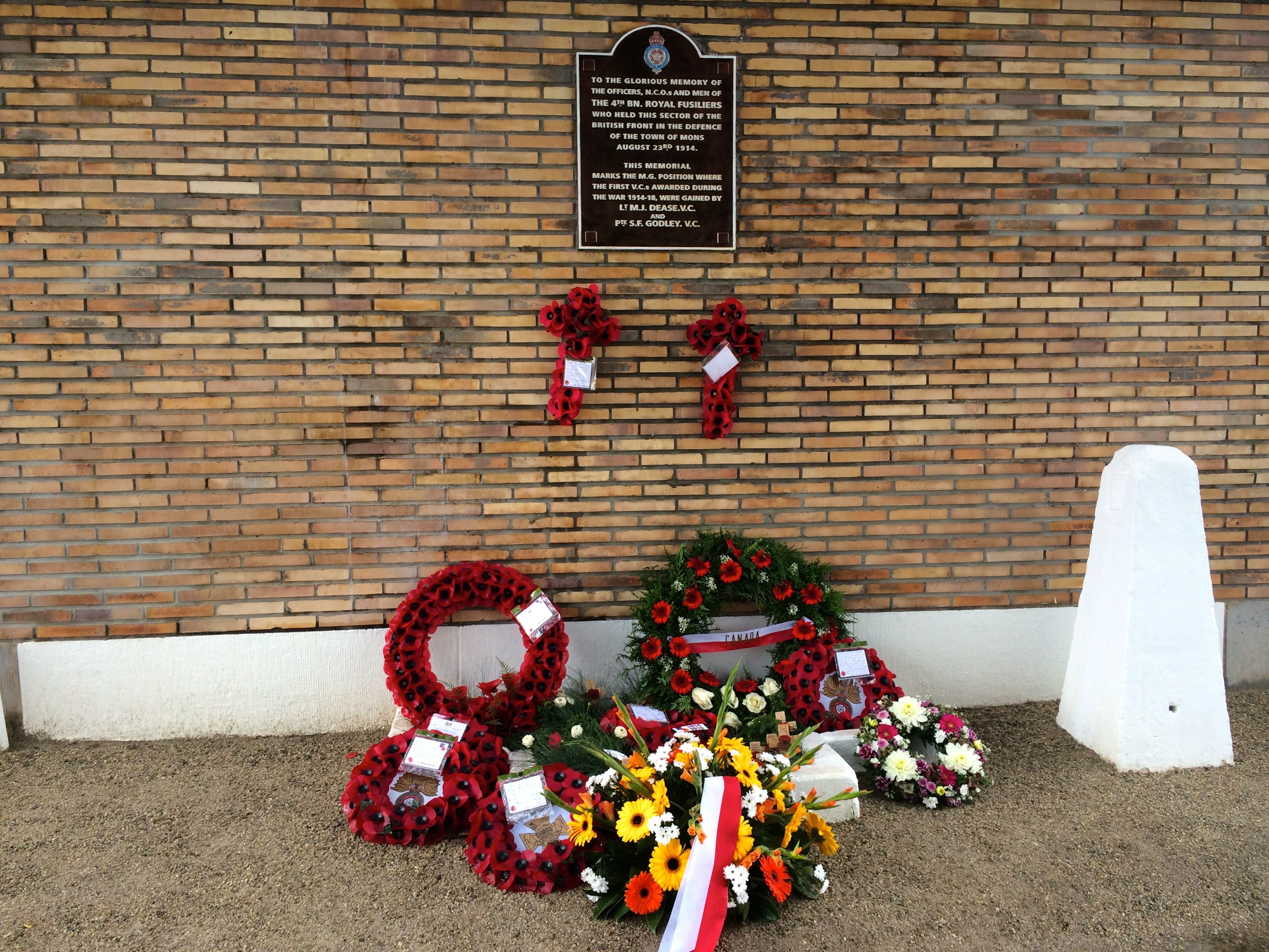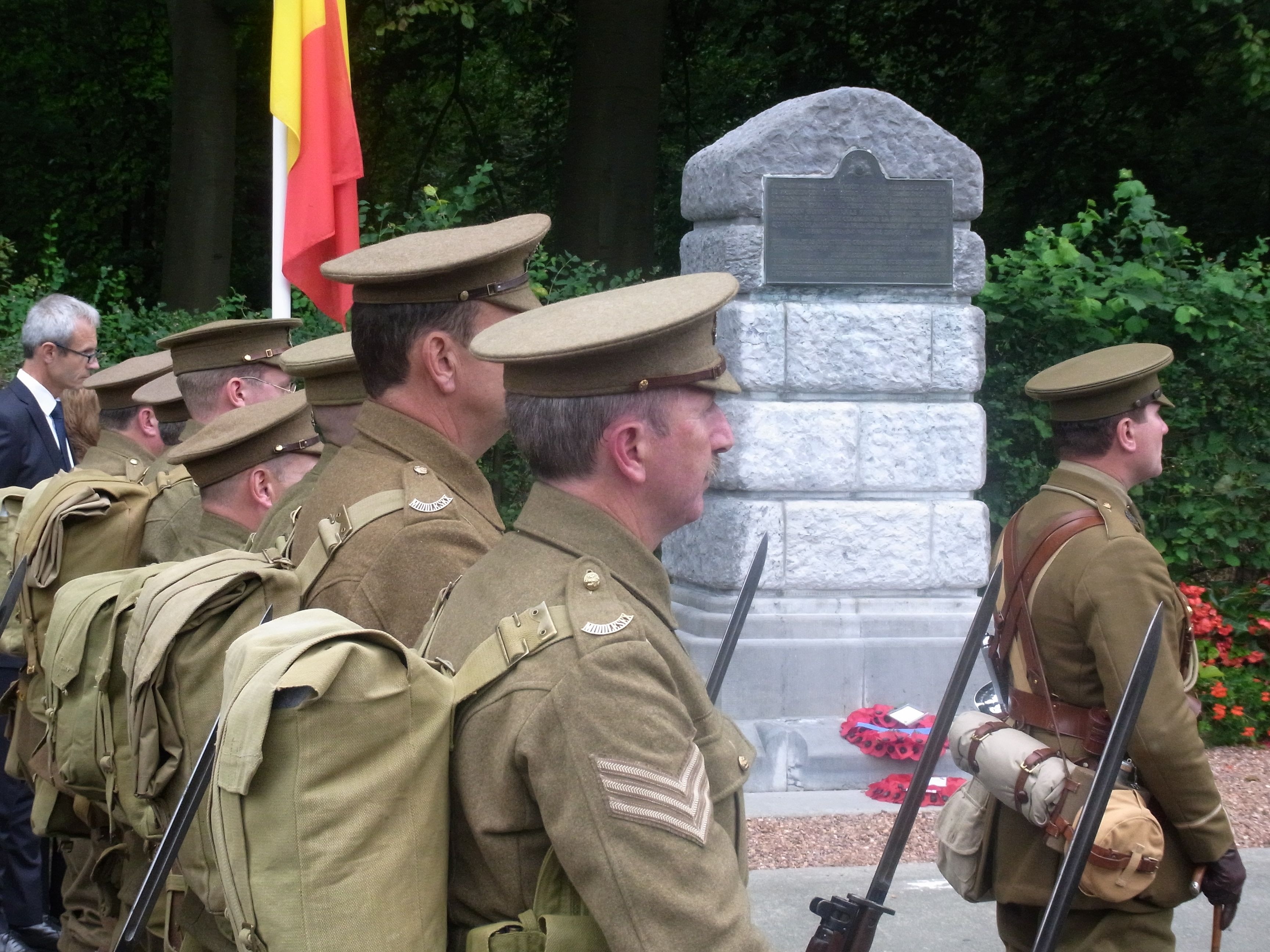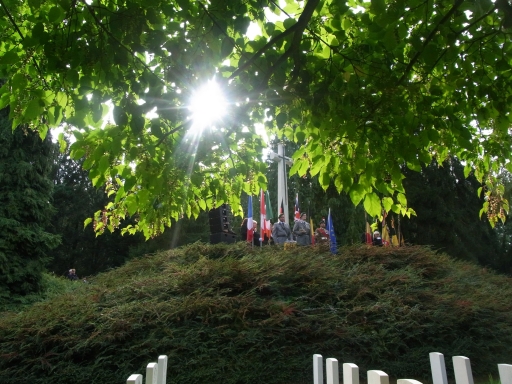Journalist Pat Sweet offers her personal view of two days of events remembering the 100th anniversary of the Battle of Mons.
Attending commemorations in Mons marking the first battle between the British and German Armies in 1914 is a very different experience for the UK visitor more familiar with Ypres. There the war is ever present, reflecting the Flemish town’s four years on the front line. A constant stream of tourists pays tribute at the Menin Gate to the British and Commonwealth dead who fell in the succession of battles which left Ypres in ruins. The streets around the re-built Cloth Hall bristle with souvenir shops and offers of battlefield tours.
In contrast, the cobbled main square of Mons and its 15th century Town Hall are original, and unmarked by any signs of military action. Yet the first and the last shots of the Great War were fired near here, marking the beginning and end of the greatest conflict of the last century, although you would have to duck into the entrance passage of the Town Hall to find any mention of those events.
At first, the somewhat workaday nature of Mons, in French-speaking Wallonia, leads you to think that this is perhaps a place which has overlooked its own historical significance, or simply sought to move on from the often painful memories of occupation during both World Wars.

Memorial to the actions of Maurice Dease VC and Sidney Godley VC at Nimy railway bridge
Go a few kilometres outside Mons and you will find memorials commemorating the first British deaths and the first two Victoria Crosses of the war. And it was standing at those sites on 22nd and 23rd August 2014, hearing readings from the descendants of those men, while all the time everyday life carried on with only the briefest interruption, which really brought home the poignancy of “For your Tomorrow, we gave our Today”.
Unlike the stylised memorials of Ypres, Thiepval or other familiar sights on battlefield tours, these simple records of a single day of action seemed deeply personal. Watching the succession of wreath-laying ceremonies and listening to the national anthems of all the former belligerents, including Germany, I was suddenly struck by the sense of individual sacrifice being commemorated.
Then there were the sightings of members of the Great War Society dressed as Tommies around Mons, resting in public parks or sitting in groups outside the Town Hall – exactly as their real-life counterparts did 100 years ago – not to mention the eerie sound of German boots tramping across the cobbles recreated by those in the uniform of their opponents.
 Service remembering the first shots fired at Casteau, 22nd August 2014
Service remembering the first shots fired at Casteau, 22nd August 2014
And as suddenly as the British soldiers appeared, so the day after, the official ceremonies were over. That, too, was a replica of events 100 years ago, when the British Expeditionary Force spent little more than 24 hours in Mons before retreating after a handful of clashes against a much greater German army.
What the commemorations at Mons brought home to me was the haphazard nature of the war when it started – a group of German officers spotted out on the road; Private Sidney Godley brought coffee and rolls by local children, before the grim defence of Nimy railway bridge with Lieutenant Maurice Dease which earned both men VCs and cost Dease his life.
No one knew what the final outcome would be after those first, fleeting encounters but few could have expected the industrialised trench warfare which would dominate the next four years.
At that early stage it was a war of sudden movements, unexpected actions, cavalry charges and ambushes, so not so very different from previous battles stretching back to Waterloo. Yet less than a month later both sides started to dig in and the war of attrition began, resulting in millions of deaths amid almost unimaginable conditions of horror.
The very ordinariness of Mons was what made me think so deeply about the impact of the war. By the time the ceremonies moved on to St Symphorien Cemetery, where the dead of both armies lie side by side in a beautiful woodland setting, and German and British officers laid wreaths together, it was impossible not to regret the enormous losses on both sides and to wish fervently never to see war again.
Yet, as the service at the cemetery made clear, there are conflicts raging right now through cities and countryside around the world and, like the British and German encounters on the Mons-Condé Canal, who can say how they will end?
Mons commissioned a highly dramatic and very compelling son-et-lumière light show for the Centenary which was projected on the façade of the historic Town Hall. It told the story of the Angel of Mons which, interestingly, was largely unknown to local inhabitants. The tale of the appearance of St George and an army of angels to help beleaguered and outnumbered British troops was hugely popular in the early days of the First World War as a morale-boosting reminder of past triumphs over adversity.
The light show captured the intensity of the British troops’ experience and the desperate hope for a miracle to save them from the Germans. It demonstrated clearly the power of myths to inspire response and action. At times I think the more familiar markers of WWI – the vast cemeteries, preserved trench systems, and huge craters blown into the ground – have also acquired an iconic status prompting a universal set of responses. Yet for me, it was the quiet, understated nature of Mons and the simplicity of the commemorative events which moved me most.
© Centenary Digital and Author
